#Harpactognathus
Explore tagged Tumblr posts
Text

Jurassic June 2024 Day 25: Apatosaurus ajax
Two huge Apatosaurus males battle each other at the height of the breeding season over territory and mates as a pair of Harpactognathus fly across the sunset.
#paleoart#dinosaur#dinosaurs#paleontology#apatosaurus#sauropod dinosaur#sauropod#sauropods#jurassic#jurassic june 2024#jurassic june art challenge#jurassic june#late jurassic#paleoartists on tumblr#paleoblr#paleobiology#dinosaur artwork#dinosaur art#dinosauria#morrison formation#apatosaurus ajax#harpactognathus
89 notes
·
View notes
Text
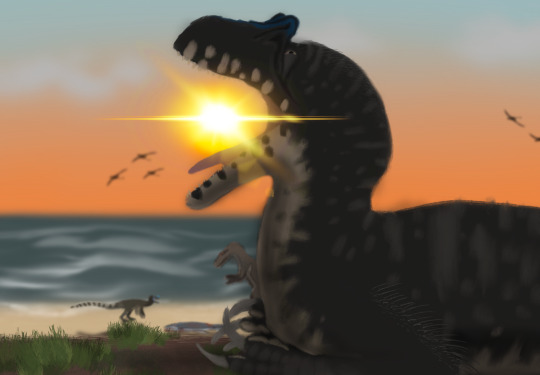
aur naur the hello sore is Earting da snu!!!!
#allosaurus#allosaurus jimmadensi#theropod#jurassic period#marshosaurus#Stokesosaurus#walking with dinosaurs#référence#(🇫🇷🥖🥐)#reference#ornitholestes#harpactognathus#sunset#paleoart
88 notes
·
View notes
Text

Harp decided he wanted to be my muse for the entirety of last night and now he's taken claim again~
He's bright~ refreshed and a little updated! I'm so pleased with the tweaks I made to his colours... I'm not the only one who missed him though >:3
#harp#pterosaur#harpactognathus#oc#original character#furry#traditionalart#furry oc#pangea#pterosauroc#paleoart#harp art#sketch page
8 notes
·
View notes
Text
Golden Blue-legged Baboon Spider (Harpactira pulchripes), hatchlings, family Therphosidae, South Africa

#exotic animals#wild animals#animals#discover#reptiles#kesfet#venom#wildlife#ant#belgesel#harpactognathus
16 notes
·
View notes
Text


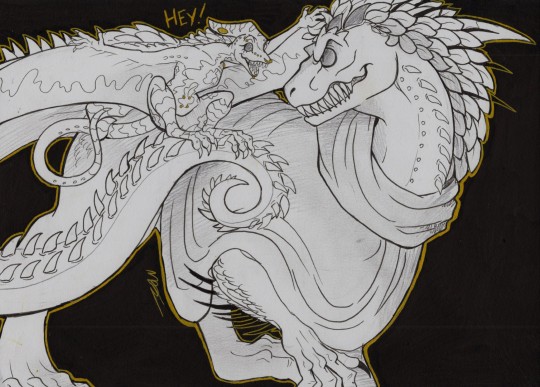


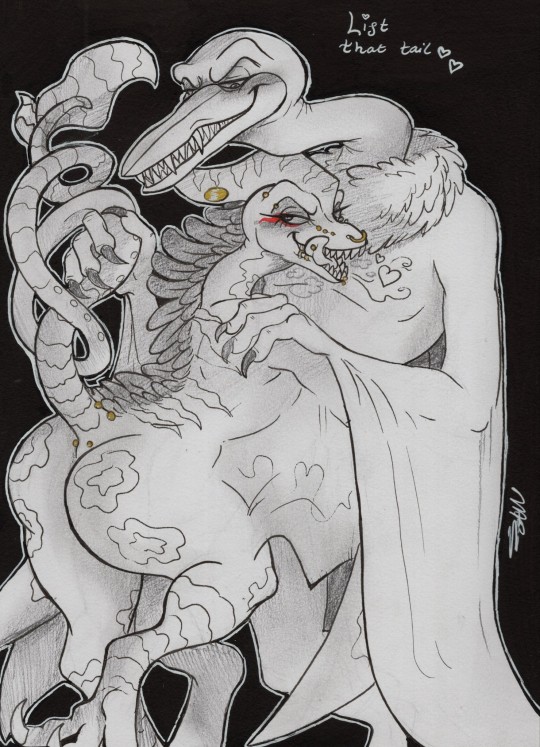
Had Harp on my mind alot lately~ the first three pics are a little older but the last three are SUPER fresh~
I'm currently pushing him to being a bit more jockish ~ because he deserves the chaotic energy, and I think that would bounce off his loves VERY well
Ft my wife's big ol I.Rex~ Guava @speromintpatty
#harp#sierra#guava#pterosaur#Harpactognathus#cearadactylus#indominus rex#dinoisland#oc#original character#traditional art#my art#lineart
13 notes
·
View notes
Text
the old assignments i had were kinda meh for some and id definitely add in more non dino variety now. but i do think psittacosaurus donut is fun
going and looking at the files of some of the older paleo rvb stuff i did and its from 2019. HACKING COUGH
#other assignment id keep is azhdarchid simmons. i waffled a lot on an actual genus tho#i did inostrancevia tex+harpactognathus church+chalicotherium caboose much more recently. more varied picks
7 notes
·
View notes
Text
Patreon request for @/rome.and.stuff (Instagram handle) - Saurophaganax maximus

Saurophaganax maximus was an allosaurid from Late Jurassic Oklahoma, USA. Reaching 10.5 metres (34 ft) in length and weighing 2.7–3.8 metric tons (3.0–4.2 short tons), it was the largest terrestrial carnivore in North America during the Late Jurassic, bigger than both its contemporaries Torvosaurus tanneri and Allosaurus fragilis. Some scientists argue that it was in fact a species of Allosaurus (making it “Allosaurus maximus”), but possible Saurophaganax material found in New Mexico may shed light on the genus. With a name meaning "lord of lizard-eaters", it was likely the apex predator of its environment.

Found in the Brushy Basin member of the Morrison Formation, Saurophaganax would have had a multitude of prey species to choose from. These ranged from small ornithischians like Camptosaurus, Dryosaurus, and Fruitadens, armoured thyreophorans like Gargoyleosaurus, Mymoorapelta, Hesperosaurus, and Stegosaurus, to a diverse array of giant sauropods like Haplocanthosaurus, Amphicoelias, Apatosaurus, Brontosaurus, Barosaurus, Diplodocus, Kaatedocus, Supersaurus, Brachiosaurus, and Camarasaurus. Small theropods included Coelurus, Hesperornithoides, Tanycolagreus, and Ornitholestes.
The Morrison didn’t only have a large diversity of dinosaurs. Many pseudosuchians lived alongside Saurophaganax, from the skittering, long-legged Hallopus to the more aquatic Amphicotylus. Pterosaurs were uncommon but widespread, and included rhamphorhynchids like Harpactognathus and ctenochasmatids like Kepodactylus. Other reptiles like rhynchocephalians, lizards, basal snakes, and turtles were common as well. Many cynodonts, mostly early mammals, also called the Morrison home.
The Morrison Formation was also rife with other large predators that could have been either competitors or prey to Saurophaganax themselves. These include the previously mentioned Allosaurus and Torvosaurus, as well as the smaller Ceratosaurus nasicornis and Marshosaurus bicentesimus. As Allosaurus seemed to be the most numerous predators in this formation, they may have been successful pack hunters while Saurophaganax was more of a “lone wolf.” Its remains are much rarer than that of its smaller, lither cousins, and it was likely an opportunistic scavenger and hunter, needing much more food to power its larger frame.

This art may be used for educational purposes, with credit, but please contact me first for permission before using my art. I would like to know where and how it is being used. If you don’t have something to add that was not already addressed in this caption, please do not repost this art. Thank you!
#Saurophaganax maximus#Saurophaganax#allosaurid#allosauroid#theropods#saurischians#dinosaurs#archosaurs#archosauromorphs#reptiles#SaritaDrawsPalaeo#Morrison Formation#Late Jurassic#North America
16 notes
·
View notes
Text

The Magnificent Langoon
the largest animal ever to fly the great lance dragon or langoon are giant Rhamphorhynchoid pterosaurs that rule over saikin with a serrated beak and powerful claws these animals are capable of hunting prey up to a ton or more in weight The langoon are most similar to the long extinct azdarchids in appearance and indeed hunt on the ground in a similar fashion yet perhaps surprisingly these animals are far closer to Genera like Harpactognathus than any Azdarchoid
These Giants of the skies are well known for their often dragon like behavior Its well documented that langoons will often steal pretty or shiny objects for a bower like nest structure which is utilized by males to attract mates in fact when the saikin subspecies was formally described in 1836 it was noted that females chose bowers that had the most impressive items with megafauna skulls and strange rocks being preferred by females
#spec evo#speculative evolution#speculative zoology#speculative biology#original species#pterosaur#worldbuilding#spec council
40 notes
·
View notes
Text

150 million years ago on the ferny savannas of Late Jurassic North America, two Allosaurus fragilis squabble over territory. Far overhead the battling dinosaurs soars the pterosaur Harpactognathus gentryii.
31 notes
·
View notes
Text
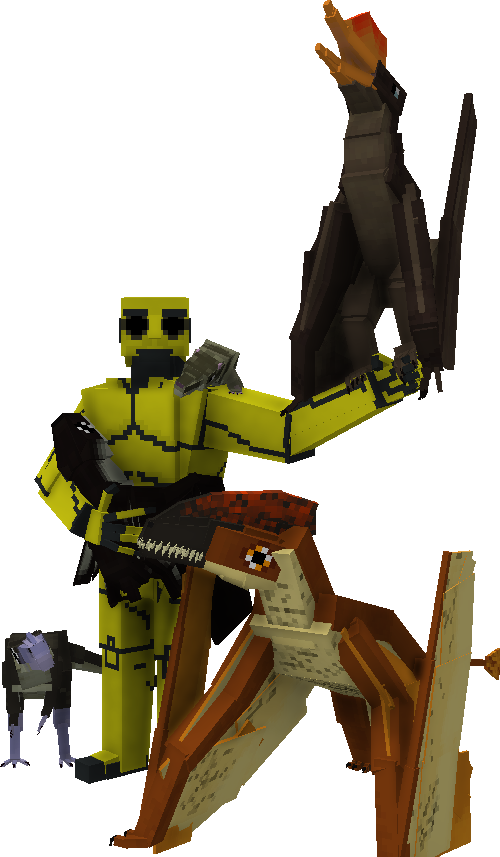
Made a new more dynamic scale model for making refference scenes so expect this man in various dangerous situations (Species left to right: Ornitholestes, Mesadactylus, Docodon, Harpactognathus, and Kepodactylus)
#lowpoly#blockbench#paleo art#morrison formation#jurassic#pterosaur#theropod#dinosaur#animals#prehistoric animals
25 notes
·
View notes
Text

Photo taken by staff member of one of our newest Aviaries featuring Harpactognathus, Batrachognathus and Othnielosaurus !
2 notes
·
View notes
Text

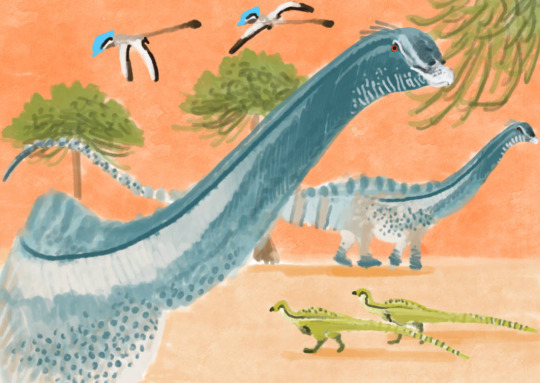

My 22nd to 24th entries for Jurassic July 2023, from left to right: Eustreptospondylus, Galeamopus, and Harpsctognathus
#dinosaur#paleoart#dinosaurs#jurassicperiod#jurassic period#harpactognathus#allosaurus#eustreptospondylus#galeamopus#paleontology
252 notes
·
View notes
Photo

So it seems that I do really love drawing pterosaurs. It’s so much fun. Names of them: Harpactognathus - Cycnorhamphus - Caviramus Hamipterus - Zhenyuanopterus
#art#my art#paleoart#pterosaur#Harpactognathus#Cycnorhamphus#Caviramus#Hamipterus#Zhenyuanopterus#god i love these funky bitches
117 notes
·
View notes
Text




"UH oh"
#harp art#harp#sierra#oc#original character#pterosaur#pterosaur oc#harpactognathus#cearadactylus#dino oc#furry#furry oc#scalie#scalie oc#pangea#paleoart#land before time#traditionalart#comic
12 notes
·
View notes
Text


Because there are 32 pages in this coloring book, I have 2 pictures for Dinovember today! They’re meant to mirror each other.
For the first, a herd of diplodocus walk along a beach! Meanwhile, in the second, a harpactognathus catches a breeze above them, surveying the herd as it passes. He’s not a dinosaur of course, but he shared life in the Morrison Formation with them! There will be a few other non dinosaur flying and marine reptiles included in this series as well.
EDIT, 1/11/22: This entire Dinovember series has been compiled and is now available for purchase on Gumroad! The pages can be printed, or thrown into a digital program! Check it out HERE!
#art#digital art#sketch#lineart#coloring book#dinovember coloring book#dinovember#drawdinovember#dinovember 2021#dinosaur#dinosaurs#Morrison formation#late jurassic#sauropod#diplodocus#pterosaur#harpactognathus
39 notes
·
View notes
Text
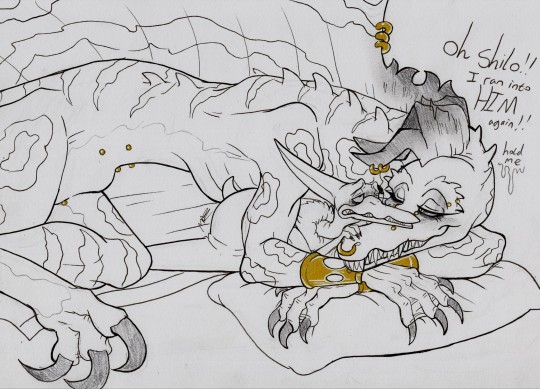
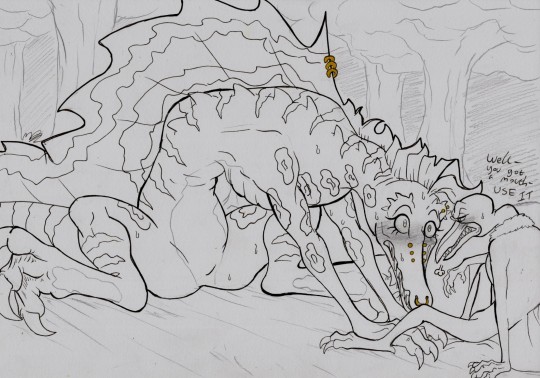
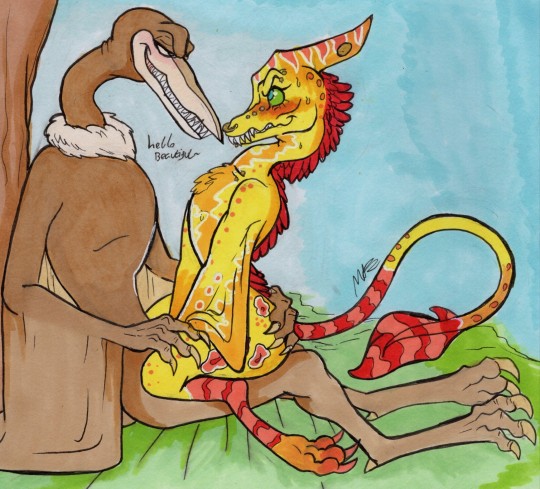



Pterosaur shenanigans- I originally used Shilo for these two boys but- soon made variant of him because the size difference got--- TIRESOME-
He's a Harpactognathus and I've enjoyed drawing him *alot* so far
#dinosaur#pterosaur#one piece#one piece oc#oc#original character#dino island#spinosaurus#traditional art#my art#lineart
6 notes
·
View notes